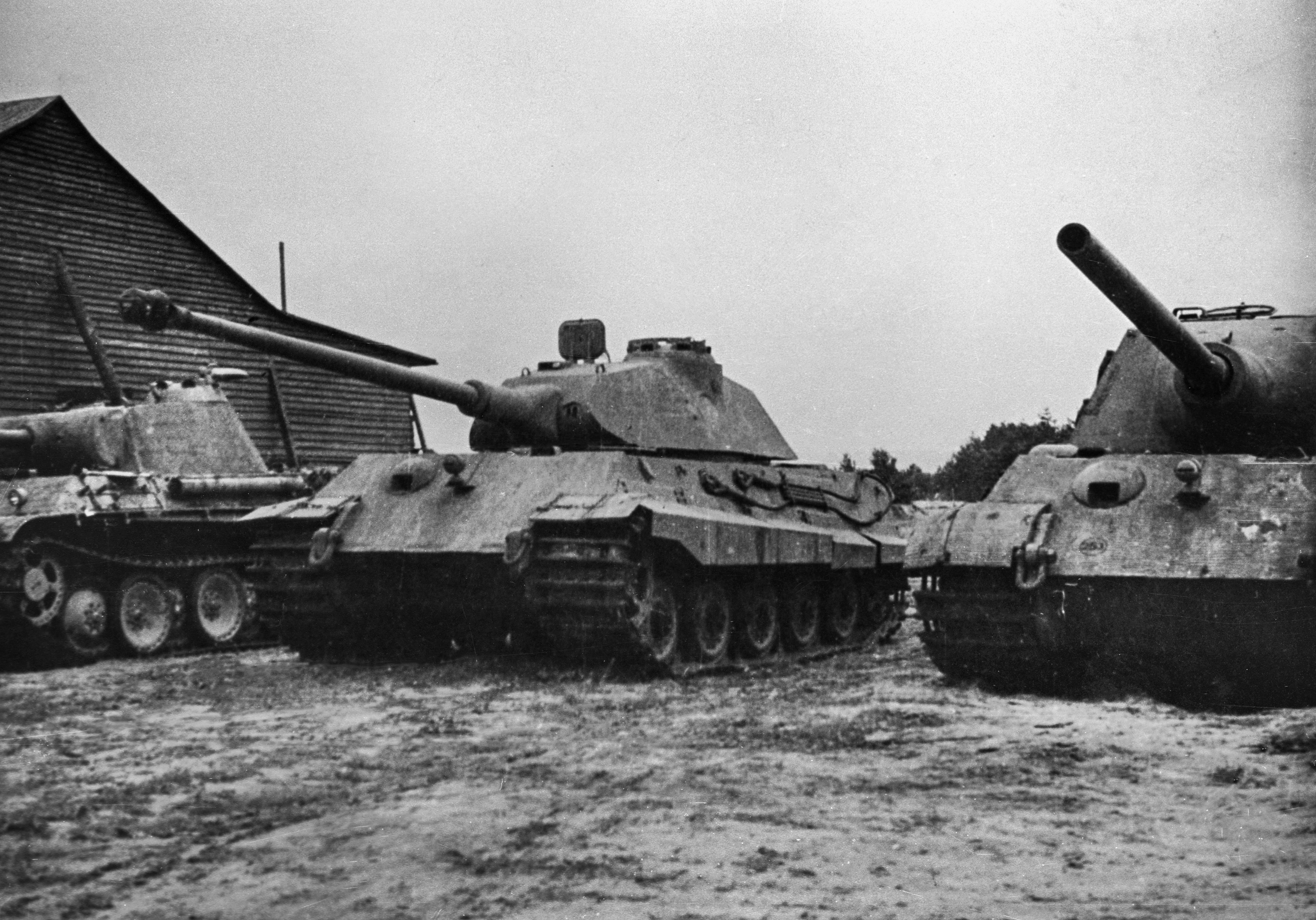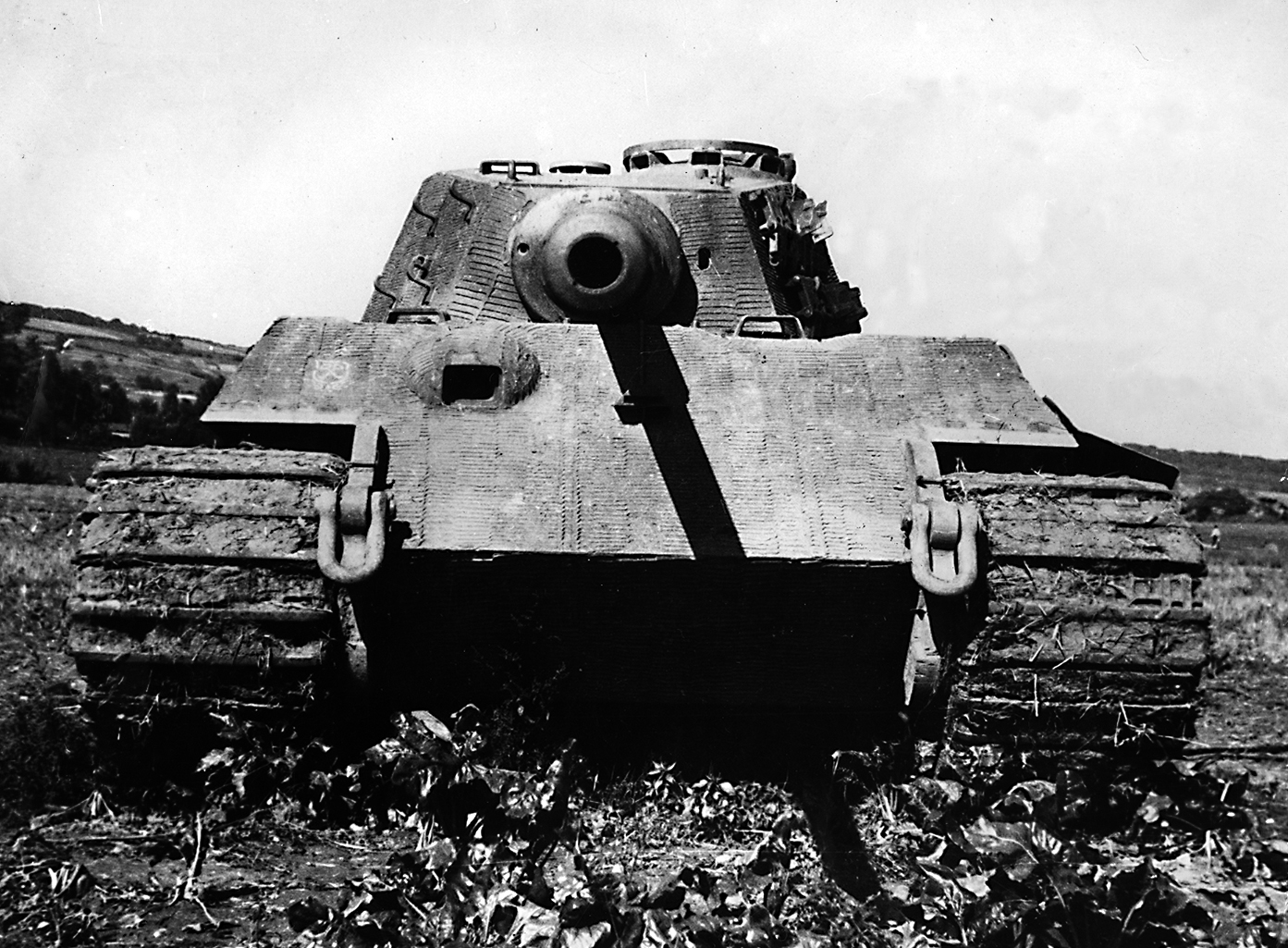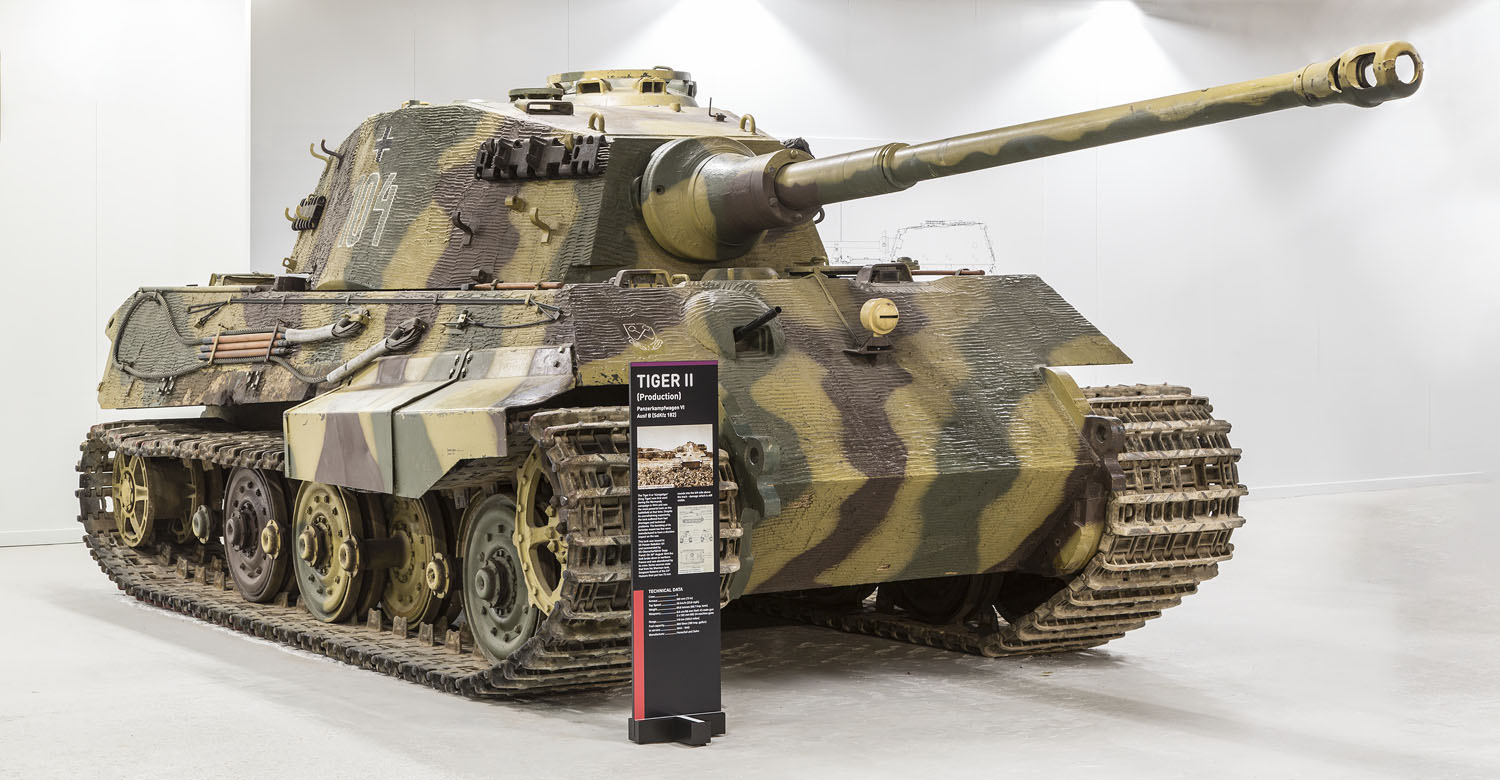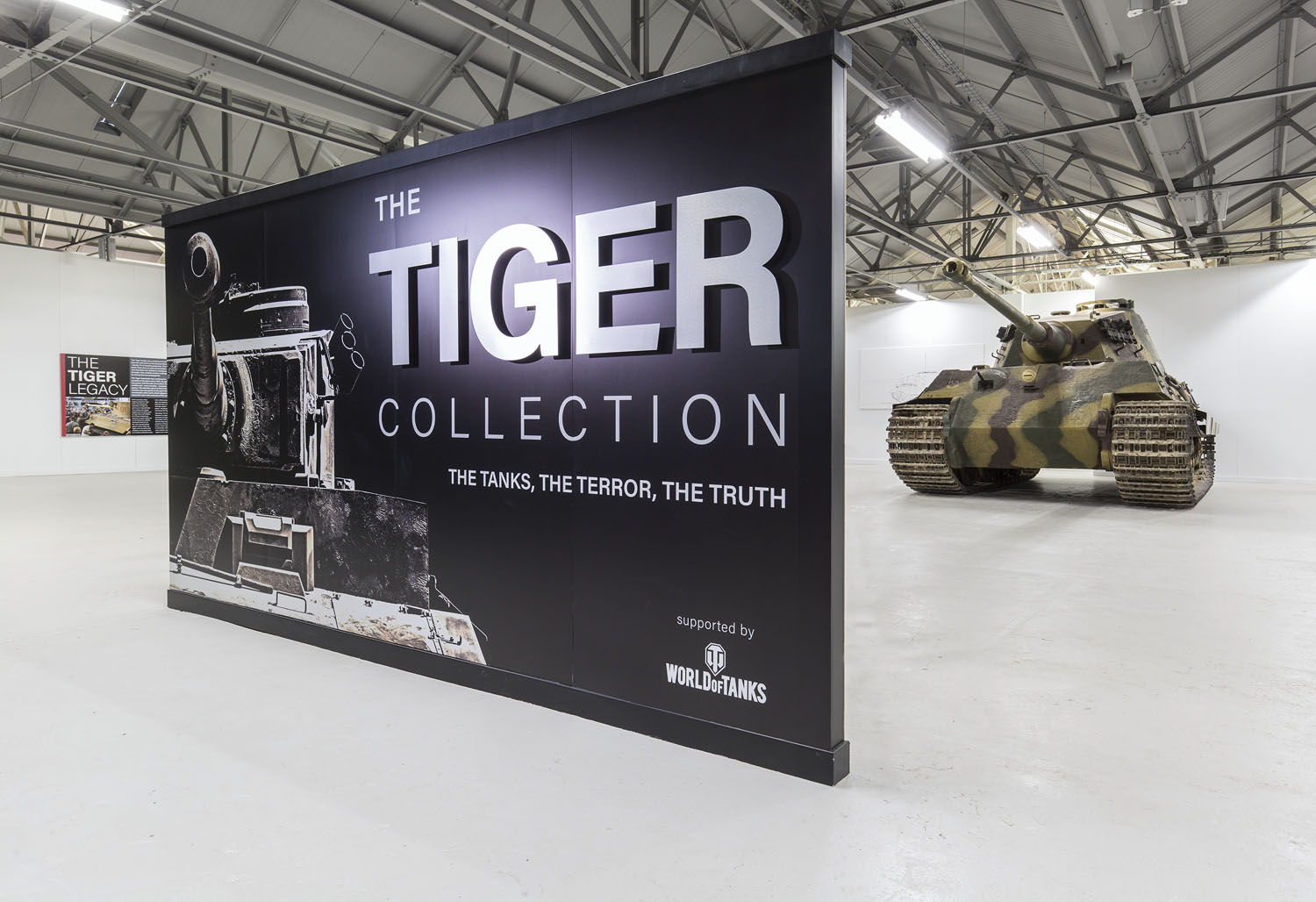In a world-first, ‘The Tiger Collection’ is a thrilling new exhibition where tank enthusiasts can explore every iteration of this iconic behemoth-including the Tank Museum‘s own Tiger 131-all under one roof. Open since the spring of 2017, the exhibition also presents first-hand veteran testimony, from men who fought both alongside and against Tiger tanks during WWII.
As one member of the Tiger family is physically absent from the exhibition (the Sturmtiger), video game developer and publisher Wargaming is stepping in with cutting-edge augmented reality technology to fill the gap. This will provide visitors with a hyper-real Sturmtiger CG model that can be manipulated and explored both in and out, all in a virtual reality setting.
Scheduled to remain open for at least two years, the collection has been a firm favourite at Tankfest 2017, presented by World of Tanks. The Tank Museum‘s Content Marketing Manager Roz Skellorn explains more about the exhibition…

What was the idea behind bringing every type of Tiger tank to be displayed in one exhibition?
The Tigers are a particularly popular family of tanks and with WWII veterans starting to leave us we decided that the time to do a really popular WWII exhibition was now. We know that people absolutely love the Tigers and we’ve been drawing people in from all over the world to see this exhibition. It’s the first time its ever been done and having them side by side you can see that they are a family. You can see the different developments that happened and how they’re related.
Unfortunately we couldn’t get the sixth member of the family, which was the Sturmtiger. World of Tanks are actually using pioneering technology called ‘Augmented Reality’ and they are building us a Sturmtiger in augmented reality to replace the fact that its not here. When its up and working, hopefully in time for ‘Tankfest’, people will be able to use a device to see the Sturmtiger as if its actually there. They can move around it and see inside it, it’s going to be absolutely incredible. It’s a shame we couldn’t get of all the actual tanks but it’s nice to have the virtual augmented one in place of it.
We’ve also done a lot of WWII veteran interviews for this. We’ve had interviews with German and British veterans and the basic idea is to see what their experiences with the Tigers were. Ultimately, we thought that if we could do this exhibition we could bring people to the subject and its something that they are going to want to see.

How formidable were Tigers in combat compared to Allied tanks?
Tigers had a very good gun on them-the 88mm-that was feared by the British soldiers. However, the real point about them is that although they were so well made and the gun was so good they were unreliable and very complicated machines. Despite their prowess, the fact that they often broke down or were driven into ditches because no one could see meant that their impact was far more psychological. People in Churchill tanks or Shermans were very afraid but so few Tigers were actually built. Around 1,300 Tigers were built compared to tens of thousands of Shermans and Churchills: they just couldn’t have the impact people thought they would because of their small numbers and unreliability. It’s really a matter of quality over quantity and quantity won out.

Can you describe the different aspects of the exhibition?
We’ve decided to do it quite sparse to give visitors the full impact of these massive machines and how intimidating they look. They are absolutely huge; especially the ‘King’ Tigers and you can understand why British crews would be absolutely terrified in their relatively small Shermans. Coming up against these massive beasts would have been terrifying but the psychological fear was far more real than reality. We’ve also got a few artefacts in a case at the end of the exhibition that relate to the Tiger such as parts of engines and equipment.
The main thing aside from the vehicles is the veteran interviews. You can hear from British veterans, one of whom is sadly no longer with us, as well as German veterans. For me, listening to the Germans is fascinating because you usually never hear from them so to hear their perspective about what it was actually like to fight in a Tiger is quite unique.
We also have a number of screens around where you can explore the tanks in far more detail. There’s archive footage, images and other things that relate to the battlefield history of the tanks. Nevertheless, having lined up the Tigers next to each other in this sparse environment really demonstrates their full impact.

How important is it to contain veterans’ audio testimonies in the exhibition?
We’re making a concerted effort to get all of the WWII veterans that we can possibly find and get them recorded. They’re the people who were there and the ones who know what they are talking about. They give the real impact for visitors to hear what it was really like and what the realities of war are. I think the Tigers often get a mythical status because they are such lovely machines and well made and its forgotten that people actually went to war in them. The veterans give you that reality check and hearing from both sides of the divide really was fascinating.
Why does the Tiger tank have such a hold on people’s perceptions of WWII?
The fear that it installed with its 88mm gun is well known. People talk of the ‘Tiger Terror’ and one of the veterans said, “If you heard a Tiger in the area everyone was on edge and worried.” They knew that it could hit you before you even saw it and you wouldn’t know about it until your tank was on fire. That was the scary, psychological impact of the Tiger.
When people look at the German vehicles they can see how over-engineered they were and how that was completely unnecessary. The lengths the Germans went to to make sure they were these perfect machines was completely unnecessary but now people see them as these wonderful vehicles. There is always the argument of, “If only they could have built more and then they would have won” but the very fact that they were terribly over-engineered meant that they could never have built more.

In your opinion, what is the most significant Tiger on display and for what reason?
For the museum it’s definitely Tiger 131, which is the only running Tiger 1 in the world. It was captured in Tunisia in 1943 and visited by Winston Churchill and King George VI. The idea of capturing a Tiger was a really big deal for the Allies, they knew this thing was out there and they wanted to get their hands on it. The Germans went to all sorts of lengths to make sure the Allies didn’t capture one so if the crews ever had to abandon their tank they were instructed to blow it up. We’re not really sure why but for whatever reason Tiger 131 was not blown up so its as original as it can be. We’ve spent an awful lot of time and money restoring it to running order and people come from all over the world to see it. We have our own ‘Tiger Day’ and it’s a really special piece in our collection because it’s completely unique.
The Tiger Collection is currently on display at the Tank Museum, Bovington. For more on World War II’s mightiest war machines, subscribe to History of War for as little as £26.
